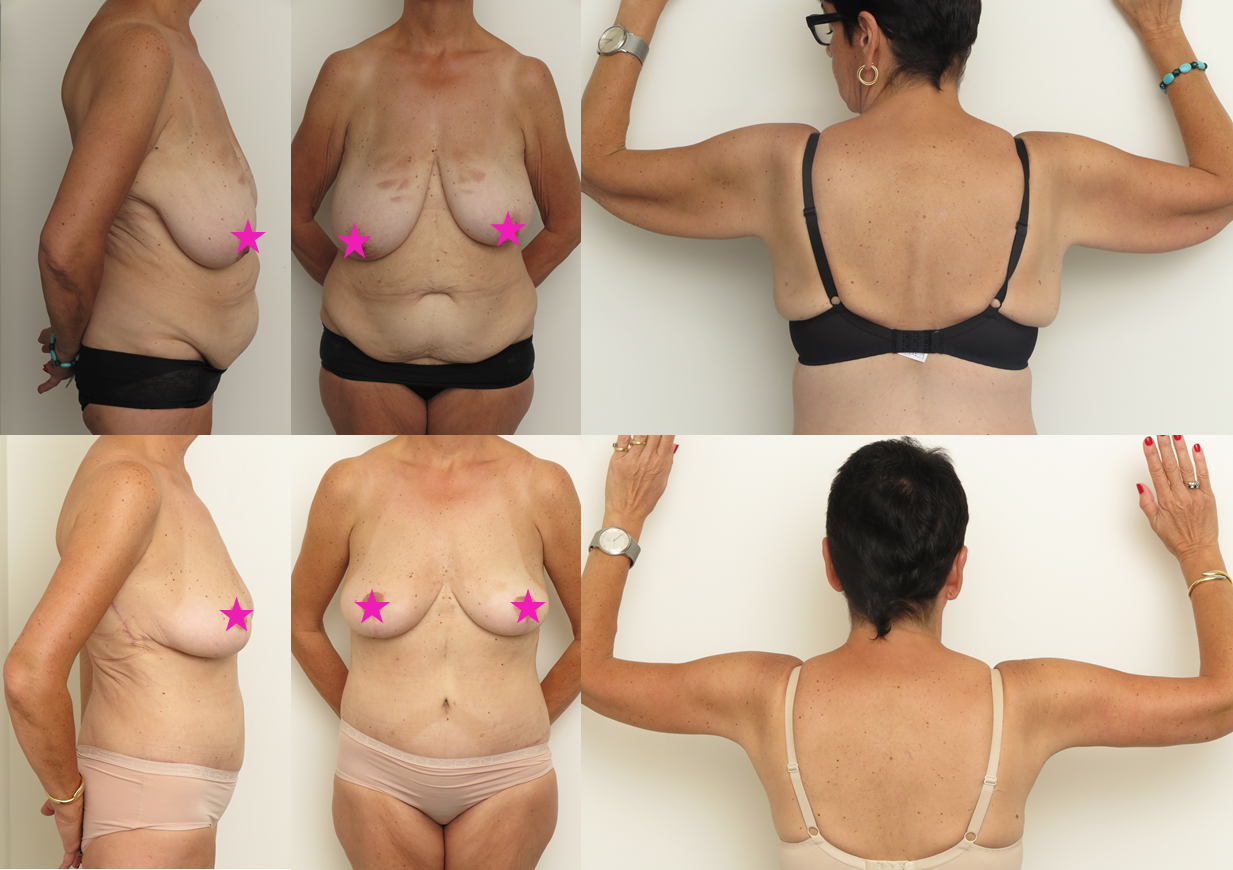
Many patients want or need more than one procedure, especially massive weight loss patients with excess skin in several areas on their body. Combined procedures are a popular choice for some patients but there are several things to take into consideration to make sure it’s right for you. We chatted to Dr Amira Sanki, respected plastic surgeon from Southern Aesthetic Plastic Surgery in Sydney to help us understand for who and when combination procedures are an option.

One of the most common reasons for combining plastic surgery procedures is due to massive weight loss. There are several combined procedures these patients (among others!) may need to consider, including:
- Breast augmentation
- Abdominoplasty
- Circumferential or belt lipectomy
- Brachioplasty
- Neck lift
- Thigh lift
Dr Sanki says, “The most common operations requested by massive weight loss patients are abdominoplasty, and mastopexy (breast lift). Brachioplasty, thigh lift and face and neck lift surgery are operations that usually take an important second place to abdominal and breast procedures.”
There are several things to consider when deciding if you are a candidate for undergoing combined procedures at the same time:
- Your profile: Your age, health status and any prior conditions may affect whether combined plastic surgery procedures are right for you. Each patient is different and may have different health issues, situations to consider that may affect their ability to have more procedures at the one time. Older patients, or patients with prior health issues will be less likely to have combination procedures as an option.
- Procedures: What procedures does the patient need? It depends on how involved each procedure is going to be. Some patients have more difficult procedures required with a more involved recovery, so many surgeons will recommend against having these procedures combined with any others.
- Cost: unfortunately money can be an issue for many patients. Can you afford the extra cost of having the procedures done at the same time? Sure, you will save money on the anaesthetist and the hospital in the long run, but often combining procedures will mean you need to come up with more money up front.
- Recovery time: Combining procedures will usually increase your expected recovery time, so can you afford to take time out of your life/work for a longer recovery? Combining procedures will also usually mean a more difficult recovery, which patients with young children may find especially hard.
- Your surgeon: Different surgeons have different preferences as to what procedures they are able to perform at the same time. If you’re keen to combine procedures and one surgeon says it’s not possible, you may wish to get a second opinion. However, if both surgeons suggest against combining procedures, you probably want to take note – there’s probably a reason why.
Dr Sanki says other considerations for combined procedures include the patient’s ability to deal with pain and the mental stress of a bigger operation. “Other predictors of a good recovery from longer procedures include a high pain threshold and positive attitude.”

Dr Sanki says they usually recommend that their operations be performed in segments that take less than six hours. “After this point, it becomes increasingly difficult to prevent blood loss, hypothermia, pressure areas and deep vein thrombosis. Your surgeon will discuss with you the best combination of procedures. Ideally, operations that are combined involve adjacent areas of the body eg abdomen and breasts OR arms and breasts are combined. There are some procedures, such as belt lipectomy and thigh lift, that we recommend doing as stand-alone operations. These operations generate scars in locations of the body that make it difficult to move easily if another part of your body is also recovering from surgery.”
Dr Sanki says because most body contouring procedures are long operations they require at least 2 – 4 weeks downtime. It is also common to continue to feel tired and have swelling, bruising and “settling” for weeks after that. She says, “It is easier to recover from shorter operations and operations that are in the upper half of the body (breasts, arms, face). Longer operations mean that a greater surface area of your body has to recover and heal. While you can only see the neat incision lines on the outside of your body, there is still a large surface area of healing tissue deep to this. Your immune system goes into overdrive after the surgery to heal your body. This leaves you feeling tired for 2-6 weeks after your operation.”
The best way to identify if you are suitable for combination procedures is to ask your surgeon (and maybe get a second or even third opinion!).
If you’d like to know more, you can arrange a consultation with Dr Amira Sanki today.
To read more, check out the blogs below:
Donna’s Breast Augmentation, Tummy Tuck and Brachioplasty with Dr Amira Sanki
Body Contouring After Massive Weight Loss with Dr Amira Sanki
Further Reading Related to Body Procedures
- Body Contouring Surgeon | Abdominoplasty, Liposuction | My Klinik
- Body Surgery Sydney NSW – Dr Kernohan
- Body Surgery | Dr Mark Gittos | Plastic Surgeon NZ
- Body Sculpting Surgery Sydney – Dr Bish Soliman
- Guy Watts | Perth Plastic Surgeon | Thigh Lift
- Body Surgery Melbourne – Aesthetik Profile
- Body Surgery – Cosmetic and Medical – Guy Watts
